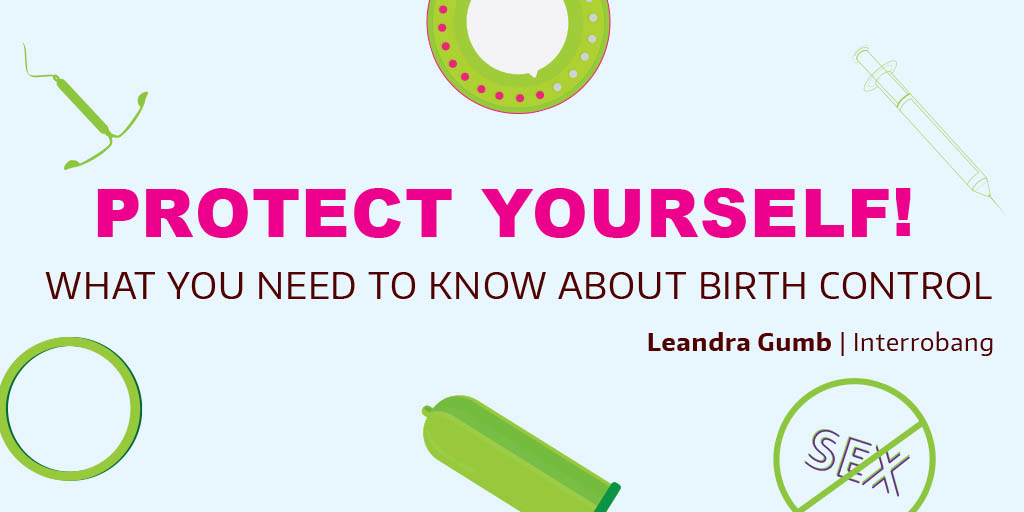Protect yourself! What you need to know about birth control

Learning about birth control methods is crucial for our generation, yet it can still a taboo topic. Do you know which birth control method is best for you? We’ve come a long way, but just in case you have questions here’s a little help.
Abstinence 100% success rate
The meaning of abstinence varies for everyone. The general idea is that there is no participation in any sexual contact including but not limited to oral, vaginal or anal sex.
Some people choose to restrict skin to skin contact. Abstinence can be practised by males or females. The act of abstinence can last a lifetime, or you could just be taking a break from sexual activity. It is the only birth control method that eliminates your chances of contracting STI’s (sexually transmitted infections) or pregnancy completely.
Oral Contraceptives 92%—99.7% success rate
The birth control pill prevents ovaries from releasing an egg during the menstrual cycle. There are many brands to choose from. Some people need to try multiple brands before finding what best suits their body. It is taken once a day at the same time for a few weeks, and then there is a small time frame where no pill is taken to begin a menstrual period.
A new packet of pills begins once your period is over. The pill protects against pregnancy but not STI’s. It also comes with a large variety of symptoms that can be light to severe. Contact your family doctor to see if it’s the best option for you and to receive a prescription.
Condoms 85%—98% success rate
The most readily available form of birth control. The most common type is the male condom, but there are female condoms too. They help protect against both STI’s and pregnancy. Made from latex or polyurethane, condoms trap sperm so it cannot enter the vagina and fertilize an egg.
Condoms are very popular and come in different shapes, sizes, colours and flavours. You can find them for free in locations such as the Middlesex-London Health Unit. Unlike a schedule-based birth control, you only need it at the time of intercourse.
Intrauterine Device (IUD) / Intrauterine System (IUS) 99% success rate
An IUD is a copper t-shaped device that destroys the sperm that enters the uterus. An IUS is a flexible plastic device that slowly releases hormones that prevent sperm from fertilizing the egg. Both devices are inserted into the uterus through a low-risk procedure.
Some women want an IUD or IUS because often their period pauses while they have it inserted. The small device can be used for up to five years at a time. An IUD or IUS does not protect against STI’s, only pregnancy. Your doctor will need to prescribe it to you.
NuvaRing 92%—99% success rate
A soft and flexible ring that is inserted into the vagina once a month. It releases two hormones, estrogen and progesterone, to prevent pregnancy. The ring stays inserted in the vagina for three weeks, then is removed for a week during the period and after a new one is inserted for another cycle.
The NuvaRing assists in regulating menstrual cycles and period pains. The ring does not protect against STI’s and it needs to be prescribed by a doctor.
Depo-Provera 97%—99% success rate
A long-lasting birth control method that is injected into females. It can be injected in the arm or the buttocks, usually every 10 to 13 weeks. Depo-Provera releases the hormone progesterone to prevent a women’s ovaries from releasing an egg every month.
This birth control is known to reduce period symptoms, such as pain and period flow. The shot does not protect against STI’s. The shot can be prescribed and given to you by your family doctor.
For more information on birth control methods and safe sex go to healthunit.com or visit the Middlesex-London Health Unit at 50 King St .














